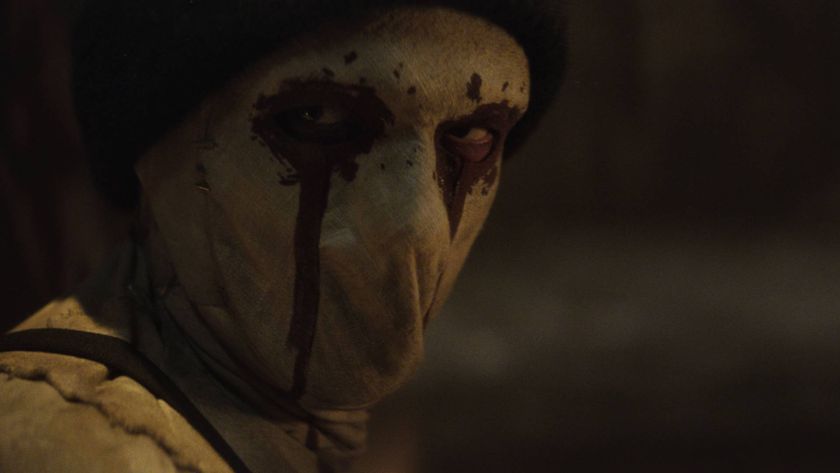Best Shots Review: Empyre #3 "clinical and distant despite strong art and ambitious aims"
From Al Ewing, Dan Slott, Valerio Schiti, and Marte Gracia
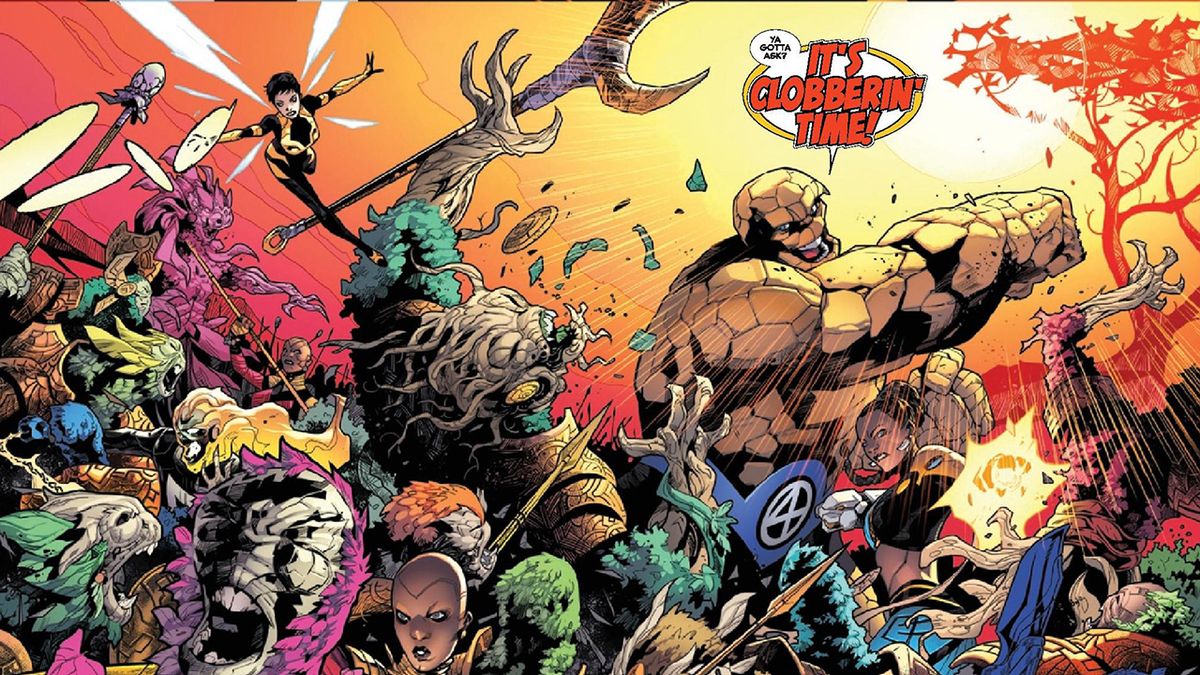
Making comics is hard. Making licensed books based on preexisting characters can be even harder. But pulling off a summer event book? At times, it looks damn near impossible. With a cast of characters as wildly disparate as the Marvel Universe, it's challenging to find a common thread that unites them all, while still allowing for individual stories to organically spin-off from the main line.
Written by Al Ewing and Dan Slott
Art by Valerio Schiti and Marte Gracia
Lettering by Joe Caramagna
Published by Marvel Comics
'Rama Rating: 6 out of 10
But what feels most counterintuitive about Empyre — and perhaps why it often struggles to connect — is that there's little to intrinsically link the Avengers and the Fantastic Four to this story as a whole. Instead, this event's main focus is interstellar politics, particularly the Kree/Skrull prince known as Hulkling and the insurgent Cotati celestial messiah Quoi. While fans of '70s and '80s classics like the Kree-Skrull War will likely find things to like about this spiritual successor, those without that preexisting affection will likely feel left in the cold.
One has to give Ewing and Slott credit for the sheer number of characters and subplots they're juggling, which feels at its best when they're tagging into Jason Aaron's Avengers cast. Positioning Black Panther and Wakanda's Vibranium mound as a sort of doomsday McGuffin establishes some degree of stakes to go alongside a star-killing WMD known as the Pyre — these are fairly understandable dangers that pair nicely with smaller character beats like Iron Man beating himself up over falling for the Cotati's charms.
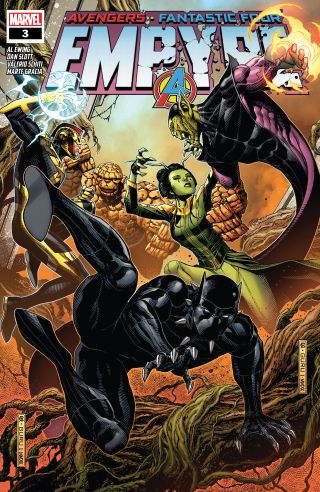
But if there's any major drawback to Empyre's storytelling as a whole, it's that Ewing is barely able to stick around long enough to flesh out our heroes' journeys. It's not to say that Hulkling doesn't have his own fanbase — which is more than one can say about Quoi — but even despite the combined forces of the Avengers and the Fantastic Four, most of the scenes feel more like a montage than sequences you can really linger and sink your teeth into.
The only scenes that Ewing does stick around, unfortunately, are the space politics, which are the narrative's single biggest drag — even for the insular nature of superhero comics, it feels like a big reach to expect familiarity with these species (even after the Captain Marvel film), and one could argue that the emotional connection is expected via nostalgia rather than earned. But moreover, by hinging so much of the storyline on these two warring factions and their internal intrigue, there's very little that organically loops in figures like Captain America, Iron Man, Black Panther, or Mister Fantastic, beyond the standard end-of-the-world heroics.
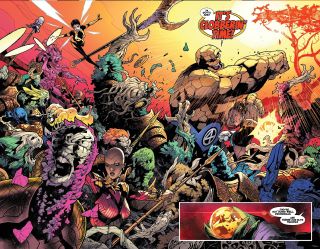
But even with some misgivings at some of the more boilerplate storytelling, you can't deny the production values to the art. Valerio Schiti does strong work at uniting the spectrum of visual designs that comprise the Avengers and Fantastic Four, and Marte Gracia's color work is as striking and energetic as ever. Schiti is able to straddle that line between emotional scenes like Iron Man's breakdown, heroic beats like the Thing and Shuri clobbering some Cotati in Wakanda, or a really iconic-looking introduction to Mantis as she returns to redeem her son.
That said, the biggest obstacle for Schiti is the Cotati's designs, which feel just nondescript enough that it makes the action sequences lose some of their tension — I'm not sure that's necessarily his fault, as they've been difficult to pin down in just about every tie-in series beyond Matteo Buffagini's delightfully loopy turn in Empyre: X-Men. Additionally, Schiti's action choreography in Wakanda does take a little bit of a swerve, as a panel of the Cotati breaking through the Wakandan force fields looks so much like the climax of Infinity War that it feels jarring — I understand the impulse to draw from the mega-popular Avengers films (and often would applaud those efforts), just this particular beat felt a little too similar for comfort.
Comic deals, prizes and latest news
Get the best comic news, insights, opinions, analysis and more!
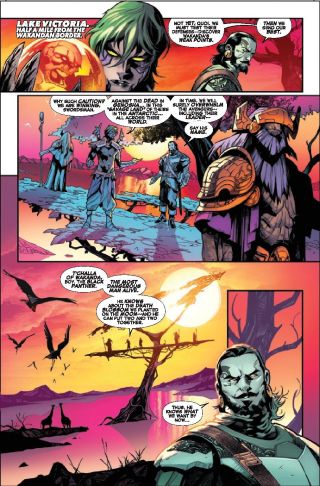
But here's the thing — events are hard, and yet they're often considered necessary to a company's bottom line. With the spiraling catastrophes our world is caught in today, the idea of some good, old-fashioned Kree/Skrull politics can sound downright comforting, if not charming. But as a high concept meant to tie together everyone in the Marvel Universe, it can't help but feel a little bit clinical and distant — something I'd never say about Ewing or Slott's other work. Some of that might be the pressures of spinning all the various plates of a summer event, which is a whole different animal than other comics — but despite its strong art and ambitious aims, the insular high concept of Empyre makes it hard to fully engage with the work.
David is a former crime reporter turned comic book expert, and has transformed into a Ringo Award-winning writer of Savage Avengers, Spencer & Locke, Going to the Chapel, Grand Theft Astro, The O.Z., and Scout’s Honor. He also writes for Newsarama, and has worked for CBS, Netflix and Universal Studios too.





